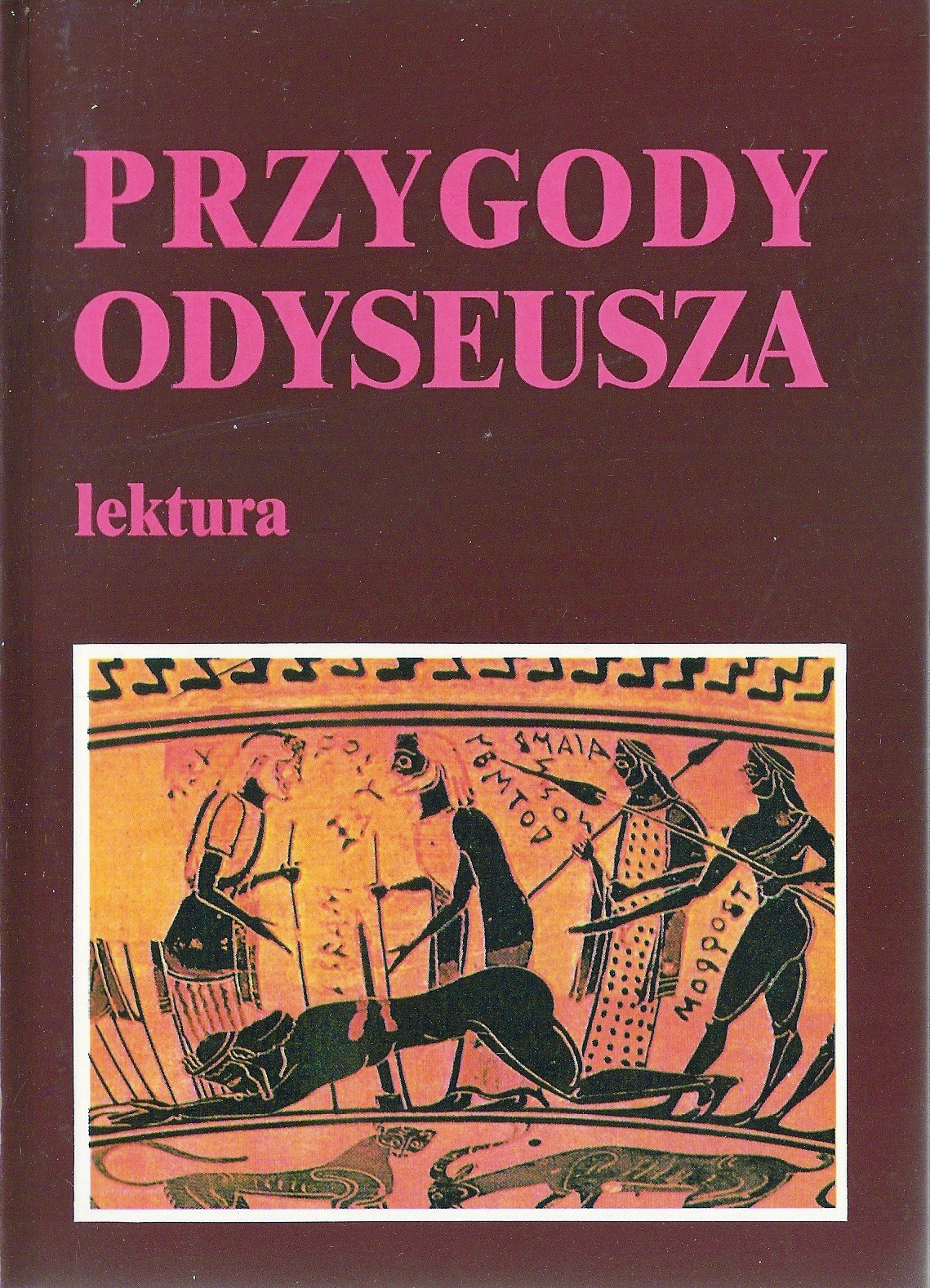Title of the work
Country of the First Edition
Country/countries of popularity
Original Language
First Edition Date
First Edition Details
Stanisław Srokowski, Przygody Odyseusza. Wrocław: Izba Wydawnicza „Światowit”, 1994, 136 pp.
ISBN
Genre
Adaptation of classical texts*
Target Audience
Crossover (high school students)
Cover

Courtesy of the publisher.
Author of the Entry:
Summary: Sylwia Chmielewska, University of Warsaw, syl.chm@gmail.com
Analysis: Marta Pszczolińska, University of Warsaw, m.pszczolinska@al.uw.edu.pl
Peer-reviewer of the Entry:
Katarzyna Marciniak, University of Warsaw, kamar@al.uw.edu.pl
Elżbieta Olechowska, University of Warsaw, elzbieta.olechowska@gmail.com

Courtesy of the Author
Stanisław Srokowski
, b. 1936
(Author)
Stanisław Srokowski is a poet, novelist, playwright, literary critic, translator and essayist. Born near Tarnopol (in eastern Poland before WW2, now Ukraine). He started as a high school teacher, and then he branched out into journalism. He also joined “Solidarność” [Solidarity] – the first non-Communist trade union in Communist Poland.
Author of about 50 books, including several novels and short stories, and books for children. He won numerous literary prizes and awards, e.g., Australian International Prize POLCUL and among Polish awards, Stanisław Piętak Literary Award, Józef Mackiewicz Literary Award, and others. His prose and poetry were translated into many languages, including English, Japanese, and several European languages. His literary work is strongly connected with the culture of eastern pre-war Poland, as well as with ancient literature and culture.
Source:
The Author's Website (accessed: November 2, 2021);
"Srokowski Stanisław", in Jadwiga Czachowska and Alicja Szałagan, eds., Współcześni polscy pisarze i badacze literatury. Słownik biobibliograficzny, vol 7: R– Sta, Warszawa: Wydawnictwa Szkolne i Pedagogiczne, 2001, 407–410.
Bio prepared by Sylwia Chmielewska, University of Warsaw, sylwia.chmielewska@student.uw.edu.pl, syl.chm@gmail.com
Summary
Based on: Katarzyna Marciniak, Elżbieta Olechowska, Joanna Kłos, Michał Kucharski (eds.), Polish Literature for Children & Young Adults Inspired by Classical Antiquity: A Catalogue, Faculty of “Artes Liberales”, Warsaw: University of Warsaw, 2013, 444 pp.
Designed in the same manner as Stanisław Srokowski’s Wojna trojańska [Trojan War], Przygody Odyseusza is an abridged and simplified version of Homer’s Odyssey; it retells Odysseus’ adventures in twenty-four chapters imitating the composition of the original epic. It is written in prose; Odysseus’ itinerary is marked on a map of Ancient Greece. The author presents the basic plot precisely and accurately, adapting it to the age of potential readers (adolescents). The following motifs are discussed:
the current situation at Penelope’s house and Telemachus’ journey;
Athena’s protection extended to Odysseus and his son;
Odysseus’ adventures: seven years in captivity on Calypso’s island, the escape to the Phaeacians and the hospitality of king Alcinoos to whom Odysseus tells stories about blinding Polyphemus, the witch-goddess Circe, Scylla and Charybdis, and the killing of the sacred cattle of Helios;
the return to Ithaca, the meeting with Eumaeus, Telemachus and Eurycleia’s recognition of Odysseus;
Odysseus’ plan to slay all the suitors at his house and the contest of the bow;
the reunion with Penelope and Athena’s intervention to bring peace to Ithaca.
Analysis
Przygody Odyseusza and Wojna trojańska by Stanisław Srokowski reuse titles of short adaptations of Homer’s works by Jan Parandowski, both well known to many generations of Polish readers. The book is aimed at “teachers and students of all types of schools” (p. 4) but definitely at older students, given the occasionally drastic language. The author wants to epitomise Homeric plots, crucial to European culture, without the necessity of reading the entire Odyssey, but with hope that his book would be an incentive to read the Odyssey in future. He does not present the story of Odysseus’ nostos in a linear, chronological order but rather preserves the Alexandrian division into 24 books to be faithful to Homer. Thus, despite the title, the plot is not a sequence of Odysseus’ adventures but is divided between Odysseus’ and Telemachus’ journeys. The chapters of the book preserve the Homeric structure with a few retrospections and spin-offs presented as a story within a story.
Due to the use of vocabulary that has changed its meaning or is dated, today’s readers can misunderstand many secondary plots and/or situations described and thus create in their minds a false image of the characters. The best example here is the use of the word gach for a suitor of Penelope. In the 19th century, or even before the Great War*, it was understood as a lover or a suitor, but after WW2** the second meaning is no longer in use. Moreover, today the word is considered a contemptuous term for a lover, especially of a married woman. In this context, the continuous information about Penelope’s “backdoor men” can confuse the reader and establish the image of Penelope as a woman using her husband’s absence, especially that the same term gach is used when describing Aphrodite’s affair with Ares. Hephaestus points out that his wife is faithless and lays in the bed with her "gach" (p. 49). The information about Penelope’s fidelity does not appear until page 67, when the late Odysseus’ mother assures him that his wife is well and still waiting for him. Unfortunately for Penelope, the general approach that women cannot be trusted is maintained, as Agamemnon retells that he had been killed by his wife’s lover and warns Odysseus to be wary and not to trust Penelope because: “there is always a betrayal inherent in a woman” (p. 69).
The portrayal of women seems to be unfavourable compared to the character of the main hero. It is Calypso who holds Odysseus prisoner, against his will; she imposes on him and initiates intimacy while he cries for his wife. Having been threatened with a sword, Circe ends the enchantment of his companions into swine and offers herself as submissive and obedient. Helen and Penelope cannot be trusted – even Athena uses stereotypes while warning Telemachus that women immediately become fully dependent once they trust a man (p. 86). Melantho and other servants complete this image of women who are fickle, mean and who, out of lust for the suitors, betray their mistress and must be punished. Even Nausicaa is presented as a slightly intrusive woman. She is not described in the same way as in Homer – she was afraid but encouraged by Athena to stay and help her protégé. Srokowski introduces her as a woman who does not avoid strangers, appears very strong and self-confident, not as a timid girl: she did not flee but on the contrary, “impertinently gazed at approaching Odysseus, amazed by his strong body, muscular arms and legs, slick movements, that Odysseus felt embarrassed” (p. 39). Against this background, Odysseus is the only true protagonist whose cleverness, ruse and even use of force are always justified. His innocence and faultlessness are highlighted. Even his obvious guilt in leading Ajax to his death is forgiven. He explains to the late Ajax that it was simply the gods’ will.
* See: Słownik języka polskiego (Słownik Wileński) cz. I. A-O, Wilno: Maurycy Orgelbrand, 1861, 328; M. Arcta słownik ilustrowany języka polskiego, t. 1, Warszawa: Wydawnictwo M. Arcta, 1916, 351.
** See: Doroszewski, Witold, ed., Słownik języka polskiego, t. 2: D-G, Warszawa: Wiedza Powszechna, 1960.
Further Reading
Doherty, Lillian E., “Athena and Penelope as Foils for Odysseus in the ‘Odyssey’”, Quaderni Urbinati Di Cultura Classica 39.3 (1991): 31–44.
Fletcher, Judith, “Women’s Space and Wingless Words in the Odyssey”, Phoenix 62.1/2 (2008): 77–91 (accessed: October 7, 2021).
Homer, The Odyssey with an English translation by A. T. Murray in two volumes, London: William Heinemann Ltd., Cambridge, Massachusetts: Harvard University Press, 1946.
Vol. 1 (accessed: October 7, 2021).
Vol. 2 (accessed: October 7, 2021).


